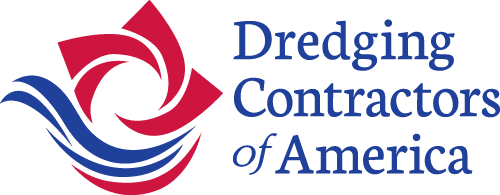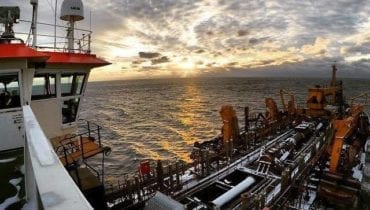The United States maritime industry is experiencing an historic resurgence, driven by a coordinated effort from both Congress and the Executive Branch to rebuild domestic capacity, ensure fair competition, and bolster national security. This report provides a detailed overview of recent developments shaping the future of U.S. maritime power—from the rapid growth and investment in the Jones Act dredging sector, to sweeping federal policies targeting unfair foreign practices, and landmark legislation aimed at revitalizing shipbuilding and strengthening the U.S.-flagged fleet. Also highlighted are ongoing regulatory challenges that must be addressed to fully unlock the potential of this critical sector.
Unprecedented Momentum: Executive and Legislative Maritime Action in 2025
The first five months of 2025 have brought an unprecedented alignment between the executive and legislative branches in restoring U.S. maritime strength. Three major developments stand out:
Executive Order on Maritime Dominance (April 9, 2025)
President Donald Trump issued a sweeping Executive Order titled “Restoring America’s Maritime Dominance.” The order sets a bold national policy: revitalizing the domestic maritime industry and workforce to strengthen national security and economic prosperity.
Key provisions include:
- Establishment of a Maritime Security Trust Fund to provide consistent funding for maritime programs.
- Creation of a shipbuilding incentives program to catalyze private investment in U.S. shipyards.
- Enforcement of Harbor Maintenance Trust Fund (HMTF) collections on foreign-originated cargo entering the U.S. from Canada or Mexico. Some shippers have historically avoided HMTF fees by landing cargo in neighboring countries before trucking it into the U.S. This EO will close that loophole and ensure all inbound cargo pays its fair share—supporting infrastructure like maintenance dredging.
Section 301 Action Targeting China’s Maritime Practices (April 17, 2025)The Office of the U.S. Trade Representative (USTR) issued its final notice of action in its Section 301 investigation into China’s shipbuilding and logistics sectors, titled “China’s Targeting of the Maritime, Logistics, and Shipbuilding Sectors for Dominance.”
This action imposes fees on Chinese-built, owned, and/or operated vessels calling at U.S. ports. Funds collected will support domestic priorities, including the Maritime Security Trust Fund. Additionally, the order phases in new requirements for Liquefied Natural Gas (LNG) exports—first requiring a percentage to be carried on U.S.-flagged LNG carriers, then later transitioning to U.S.-built and operated vessels, reaching 15% of all LNG exports.
Bipartisan SHIPS for America Act (April 29, 2025)
Congress introduced the bipartisan “Shipbuilding and Harbor Infrastructure for Prosperity and Security (SHIPS) Act,” led by Senators Mark Kelly (D-AZ) and Todd Young (R-IN), alongside Reps. John Garamendi (D-CA) and Trent Kelly (R-MS). The bill complements executive actions and codifies a long-term strategy for revitalizing the U.S. maritime sector.
Key provisions include:
- Strategic Commercial Fleet Program: Expands the U.S.-flag international fleet to 250 vessels.
- Maritime Security Board and Trust Fund: A presidentially appointed Maritime Security Advisor will chair an interagency board overseeing national maritime strategy, backed by a dedicated Trust Fund financed by maritime-related fees and penalties.
- Penalties on Adversary-Linked Shipping: New duties will target vessels owned or operated by foreign entities of concern (China, Russia, Iran, North Korea), including those doing significant business with China State Shipbuilding Corporation (CSSC).
- Shipbuilding Incentives: Offers tax credits, grants, and financial assistance for expanding the U.S. shipyard industrial base.
- Maritime Workforce Development: Provides robust support for U.S. Merchant Marine Academy, state maritime academies, and workforce training.
Dredging Is Core to Maritime Readiness
Dredging is a foundational part of the maritime industrial base—and the Jones Act dredging industry stands ready to support these national objectives. Recent federal actions open up new opportunities to:
- Upgrade existing shipyards and develop new ones;
- Deepen and maintain port access channels;
- Improve waterfront infrastructure supporting U.S. shipbuilding.
Dredging contractors also anticipate expanded access to tax incentives, restructured loan guarantees, and other financing tools supporting the construction of U.S.-built dredges.
The U.S. private-sector dredging industry, protected under the Jones Act, remains strong and highly competitive. It is currently in the midst of a $3 billion capital construction program, investing in new dredges, support vessels, and equipment to meet the country’s growing maritime infrastructure needs.
Later this summer, the Trailing Suction Hopper Dredge (TSHD) Frederick Paup is expected to enter service. The Manson Construction Co. vessel—currently nearing completion at Seatrium AmFELS in Texas—is a 15,000-cubic-yard hopper dredge and the largest ever constructed in the United States. In March, The Dutra Group announced a notice to proceed with the construction of another major vessel, the 10,464 -cubic-yard TSHD Adele, at Eastern Shipbuilding Group’s yard in Florida.
The American dredging industry remains fiercely competitive. In FY2023, 56 companies were awarded U.S. Army Corps of Engineers dredging contracts—including 21 large and 34 small businesses. Total federal awards reached $2.1 billion, representing a 39% increase over FY2022, and 20% above the seven-year average of $1.7 billion. FY2023 marked the highest annual total on record.
Regulatory Challenges: Dredge Windows and ESA Delays
Despite progress, key regulatory barriers remain—particularly restrictions on when and where dredging can occur.
The Dredging Contractors of America’s top regulatory priority is securing more dredging days per year. In some states, dredging is limited to as little as four months annually—not because of environmental emergencies, but due to outdated “dredge window” restrictions rooted in expired biological opinions.
I recently briefed Rep. Mike Collins (R-GA)—Chairman of the House Subcommittee on Water Resources and Environment—on this issue. The missed opportunity to conduct maintenance dredging in Brunswick Harbor was not due to a lack of dredges, but entirely due to regulatory red tape.
Biological Opinions and the ESA: Delays and Impacts
The root of these constraints lies in delays in updating biological opinions under the Endangered Species Act (ESA). These documents are critical to determining how dredging activities may affect protected species. However, the consultation process under Section 7 of the ESA has slowed, limiting dredging to narrow seasonal windows in many areas.
The 2020 South Atlantic Regional Biological Opinion (SARBO) governs dredging from North Carolina to Florida. It was intended to streamline requirements, incorporate all listed species, and increase flexibility for year-round dredging—while also enhancing environmental monitoring and National Oceanic and Atmospheric Administration (NOAA) coordination.
Despite its promise, implementation of the 2020 SARBO has been sluggish, leading to confusion, delays, and constrained Corps of Engineers project schedules. Dredging activities on the East Coast have been particularly affected, with Corps districts struggling to meet updated monitoring protocols under uncertain timelines.
This is not the fault of the Army Corps of Engineers. Indeed, the U.S. Army Corps of Engineers, Savannah District, awarded a contract on June 2, 2025, to support the preparation of four concurrent and individual National Environmental Policy Act (NEPA) Environmental Impact Statements (EIS) for the operation and maintenance (O&M) of Brunswick Harbor, Charleston Harbor, Morehead City Harbor, and Wilmington Harbor navigation projects that address the implementation of the 2020 National Marine Fisheries Service South Atlantic Regional Biological Opinion. This will take up to four years to complete—more red tape.
I discussed these challenges with Congressman Collins and his staff, who expressed strong interest in working to cut red tape and increase available dredging days. We’re going to need Congressional help to clear these hurdles and remove the outdated regulations.
Taken together, the developments of 2025 mark a transformative moment for the American maritime industry. Federal investment, legislative action, and bold executive leadership are aligning to restore U.S. capabilities across dredging, shipbuilding, and maritime logistics—industries essential not just to economic prosperity, but to national security and sovereignty. The U.S. dredging industry stands ready to meet the moment, supported by a modernized fleet, skilled workforce, and a clear mandate to maintain and expand the nation’s port infrastructure. However, to fully realize this potential, lingering regulatory impediments must be addressed—particularly the outdated dredging windows and delayed ESA consultations that limit operational flexibility. With sustained momentum and targeted reform, America’s maritime future will be stronger, more secure, and built to last.
About the Author: William P. Doyle is CEO of the Dredging Contractors of America. He previously served as Executive Director of the Port of Baltimore and as a U.S. Federal Maritime Commissioner. A graduate of Massachusetts Maritime Academy and Widener University Commonwealth Law School, he is a licensed officer in the U.S. merchant marine and a member of the Marine Engineers’ Beneficial Association (AFL-CIO).







